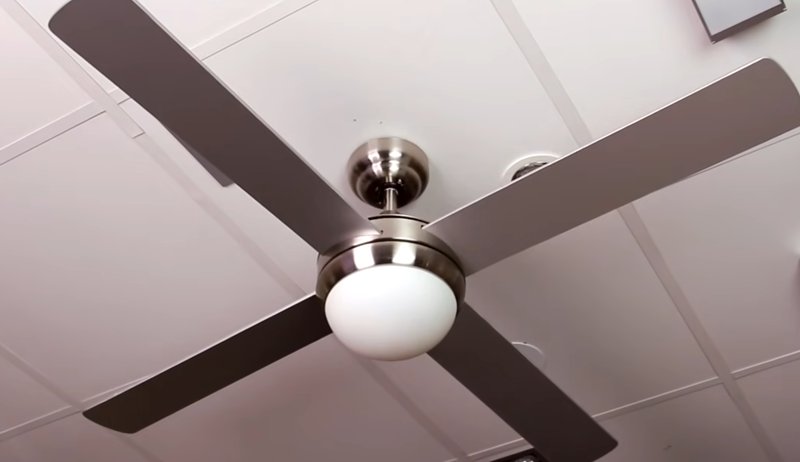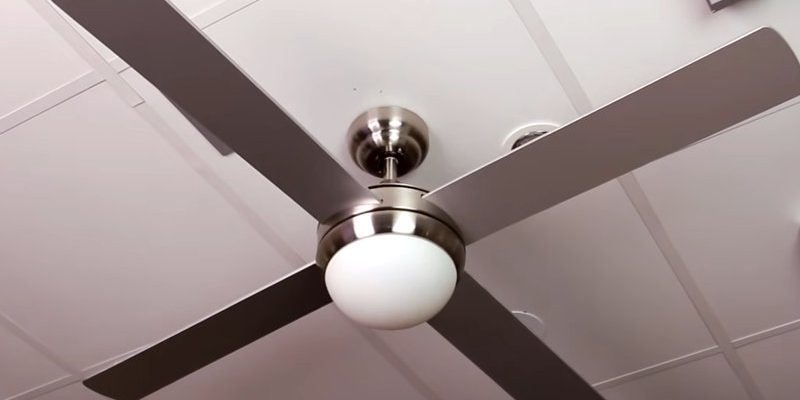
Ceiling fan remotes seem simple, but there’s a lot happening beneath those plastic buttons. Harbor Breeze, a common brand you’ll find at big-box stores, uses a handful of remote models—some with simple on/off switches, others with fancy dimmers or even programmable codes. It’s easy to assume there’s just one quick fix. Honestly? There are several reasons why the light on your Harbor Breeze ceiling fan remote isn’t responding, and, yeah, a dead battery isn’t even the weirdest one.
Common Causes: Why Harbor Breeze Ceiling Fan Light Function Stops Working
First up, let’s get real about why this issue pops up in the first place. A ceiling fan remote, especially one from Harbor Breeze, is basically a tiny wireless messenger—press a button, and it sends a signal to a receiver in the fan itself. But if anything gets lost along the way, the light function could go silent.
Here’s the thing: most problems come down to these causes:
- Dead or weak batteries in the remote (honestly, this gets everyone at some point)
- Remote and receiver out of sync (the code or pairing can easily get mixed up)
- Receiver or wiring issues inside the fan housing
- Light bulb problems (sometimes it’s not the remote at all!)
- Interference or range issues (other electronics or thick walls can mess with the signal)
You might be wondering: “Can’t I just press ‘reset’?”—and sometimes you can! But in other cases, the problem takes a bit more sleuthing. Stick with me. Let’s break down each fix.
Checking and Replacing Harbor Breeze Remote Batteries
Let’s start with the most basic—but surprisingly common—culprit. Even if the fan itself still spins, a near-dead battery can zap the power needed for the light function. Some Harbor Breeze remotes have separate circuits for fan speed and lighting. That means a weak battery could control the fan but stumble on the light button.
Here’s how to rule this out:
- Open the battery compartment. Most Harbor Breeze remotes have a little sliding door on the back.
- Look for corrosion, leakage, or loose contacts. If the batteries look old or rusty, swap them out.
- Replace with fresh alkaline batteries, not the old ones from your junk drawer. Trust me, it matters.
- Snap the cover back in place and try the light button again.
Honestly, nine times out of ten, a fresh battery fixes random glitches—especially if the light works now and then, but not always. If you’re still not seeing that glorious glow, let’s move to the next step.
How to Resync or Pair Your Harbor Breeze Ceiling Fan Remote
Remotes and receivers sometimes break up—just like old friends after a weird argument. When that happens, the remote and the fan stop “talking,” and the light button stops working. This can happen after a power outage, battery change, or if you accidentally change the dip switch code (those little toggles inside the remote).
Pairing (or resyncing) a Harbor Breeze remote usually means:
- Turning off power to the fan at the circuit breaker (don’t just flip the wall switch)
- Waiting about 10 seconds
- Turning the power back on
- Within 30 seconds, pressing and holding the “fan” or “light” button (depends on your model) for about 5 seconds
Some remotes use dip switches: tiny physical switches inside the battery compartment. Both the remote and the receiver in the fan must have matching codes.
- Check inside the remote for a dip switch panel
- Open the fan’s canopy (use a step stool and basic screwdriver, but only if you’re comfortable)
- Find the receiver unit and match the dip switch settings to the remote
Mismatched codes? The remote won’t control anything, especially the light. If you’re not 100% sure, gently reset both sides to the same pattern (try all up or all down), then repeat the pairing process.
Insight: Many Harbor Breeze remotes look identical, but dip switch codes must match the receiver—no exceptions.
Troubleshooting the Harbor Breeze Ceiling Fan Light Receiver
Think of the receiver as the “ears” inside your fan. It listens for the remote signal and tells the fan (and light) what to do. If the receiver gets fried, miswired, or even half unplugged, you’ll get zero response from the light function.
Here are signs the receiver might be the culprit:
- The fan responds, but the light doesn’t (and you know the bulb is fine)
- Batteries and codes have already been checked
- Remote works with other Harbor Breeze fans, but not this one
Steps to check:
- Turn off the circuit breaker before poking around—never trust the wall switch alone.
- Remove the canopy cover and carefully inspect the receiver.
- Check for loose connections, burned smells, or melted plastic—any of these could signal a bad receiver.
- If you have a universal receiver handy, swap it in temporarily to test (just remember, not all remotes pair with all receivers).
Receivers can fail over time, especially if there’s been a power surge or moisture got into the fan housing. Not the easiest fix for a beginner, but nothing you can’t handle with a steady hand and a little patience.
Light Bulb and Wiring Issues: Not Always the Remote’s Fault
Here’s a plot twist: sometimes the *remote* gets blamed, but the real villain is the light socket or wiring. If your Harbor Breeze ceiling fan uses traditional bulbs, start simple:
- Screw in a fresh bulb—sometimes the filament dies and the remote takes the heat.
- Try a different bulb type—LED, incandescent, whatever fits the socket. Some remotes don’t play nicely with certain LEDs or dimmable bulbs.
- Check for loose bulb contacts—a wobbly bulb won’t light up, no matter how many times you click.
If that’s not it, think about the wiring:
- Harbor Breeze fans with light kits have extra wires in the ceiling and receiver: one for the fan, one for the light. If the light kit’s wire is loose or disconnected, the remote can’t power the light even if its signal reaches the receiver.
- This is especially common if the fan was recently installed or bumped during cleaning.
Sometimes all it takes is a gentle twist to get everything back in sync. If you’re not comfortable checking wires, a friendly electrician can eyeball it in a few minutes.
Signal Interference and Range Limitations in Harbor Breeze Remotes
Ever try to use your remote from another room—or with the closet door open? That’s interference at work. Harbor Breeze ceiling fan remotes use radio frequency (RF) signals, and these can get tripped up by thick walls, metal objects, or even other devices using a similar frequency.
Common causes of interference include:
- Home Wi-Fi routers, microwaves, or baby monitors
- Large metal furniture between the remote and fan
- Multiple fans with similar remotes in different rooms (signals can cross-talk)
Here’s my tip: always use the remote with a direct line of sight to the fan, even though it’s not technically infrared. If the light works up close but not from across the room, try moving potential signal blockers and re-test. And if you have two Harbor Breeze fans on the same floor, make sure their dip switch codes are different, or you’ll get a comedy of errors.
Pro Insight: Universal ceiling fan remotes work with many receivers—but sometimes they add even more interference. Harbor Breeze brand remotes usually pair best with Harbor Breeze receivers.
Resetting a Harbor Breeze Ceiling Fan Remote
Stuck in a cycle of frustration? Don’t toss your remote just yet. Most Harbor Breeze remotes include a basic reset function—you just have to know the right combo.
Here’s a common reset process:
- Turn off the ceiling fan power at the breaker (not the wall switch).
- Wait 30 seconds.
- Restore power, then hold the “light” button (sometimes marked with a bulb icon) for 10–15 seconds.
The light should blink to confirm the reset. If it doesn’t, try the same with the “fan” button or check the remote’s manual (sometimes there’s a hidden button using a paperclip to press).
If resetting doesn’t work after a couple of tries, it usually points to an issue further up the chain: code mismatch, receiver failure, or wiring trouble. But a reset is free and quick—always worth a shot before you dive into the more complicated fixes.
When to Use a Universal Remote vs Harbor Breeze Brand Remote
You might be eyeing those big packs of universal remotes at the store and wondering, “Will one of these fix my light issue?” Here’s my honest take: sometimes yes, sometimes no.
Universal remotes work with lots of brands—including Harbor Breeze—but they might not sync perfectly with all fan/receiver combos. Some features (like dimming or multi-speed fans) don’t always work as smoothly. You’ll usually need to set the code or pair it using a similar process (check those dip switches!).
- Use a Harbor Breeze remote if you want plug-and-play reliability and all the original fan/light features.
- Try a universal remote if you lost yours, or if you have several fans in one house and want to consolidate.
- If you switch, be prepared to pair it, and don’t be shocked if the light button response isn’t instant—sometimes there’s a tiny delay.
Just double-check what your fan’s receiver supports before buying. Not every universal remote will play nice with every Harbor Breeze fan. If you’re unsure, Harbor Breeze’s own remotes are a safer bet for full compatibility.
Safety Tips and When to Call a Professional
Let me be straight: ceiling fans and remotes are mostly safe, but opening up wiring or climbing on ladders has its risks. If you ever feel uncertain, there’s no shame in calling a pro.
- Always kill power at the breaker before checking wiring or the receiver. Don’t gamble on the wall switch alone.
- Use a sturdy ladder or step stool, not a wobbly chair. The last thing you want is a fall.
- If you smell something burning, see melted plastic, or touch a wire and feel heat—stop and call an electrician. That’s a sign of a deeper issue.
- Replacing a receiver or fixture is a quick job for a licensed pro, and you’ll sleep better knowing it’s done right.
Honestly, there’s a ton you can check yourself with patience. But if you hit a wall (or a live wire), professionals are worth every penny.
Bringing Back the Light: Summing Up the Fixes
If your Harbor Breeze ceiling fan remote isn’t flipping on the light, it could be a simple battery swap—or something sneaky like a receiver issue or code mismatch. Step through the basics: batteries, pairing, bulbs, wiring, and resets. Don’t forget about interference from other gadgets or walls, and make sure you’re using the right remote for your setup.
Most fixes are doable with a little time, a screwdriver, and safe hands. If anything feels too risky or confusing, professional help is always a wise move. The good news? Your fan’s light function can almost always be brought back to life with the right troubleshooting. Here’s to beating the darkness—one remote click at a time.
